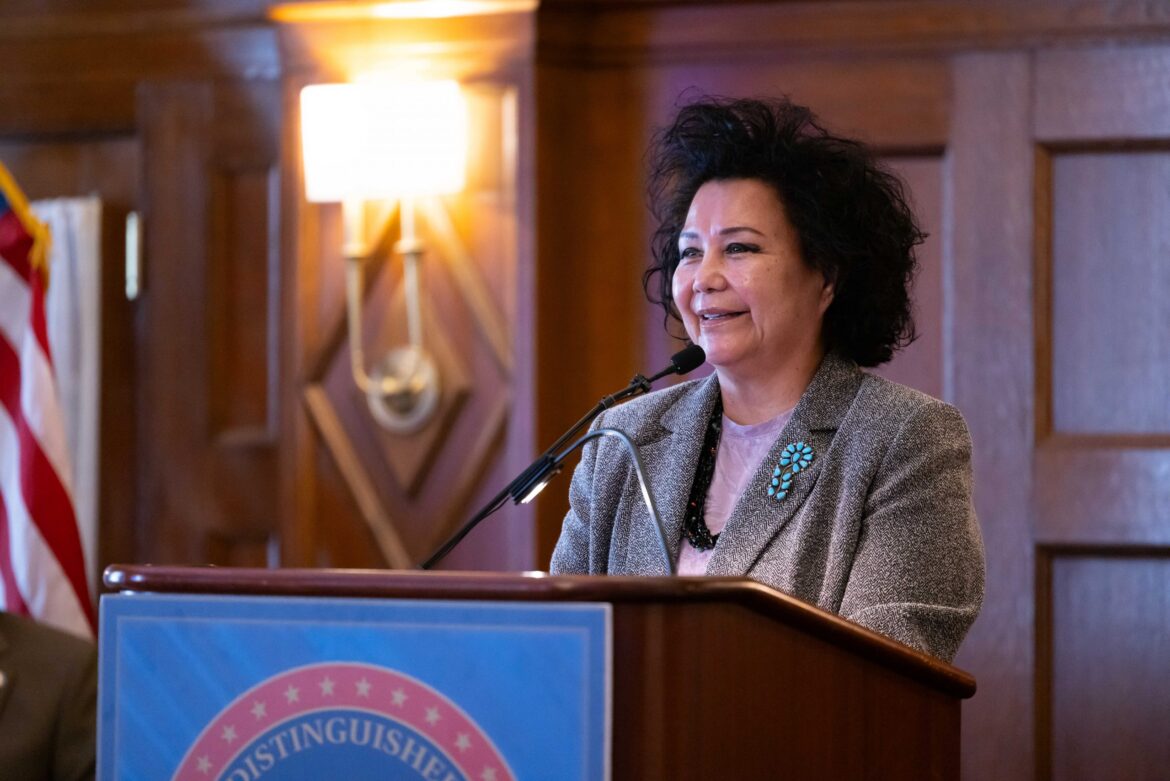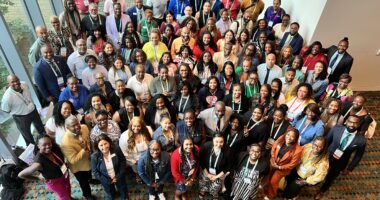A Navajo Principal Centers Culture in Her Leadership Practice
A Navajo principal— whose school comprises 93-percent Native American students—incorporates her strong connection to her indigenous culture into her school leadership to cultivate children’s unique gifts and encourage celebration of their culture.

Ya’a’teeh (Greetings)! I am a descendent of the first Indigenous People and a member of the Navajo Nation. My clans are Nakai Dine (Born of Mexican People Clan), Hooghanlani (Born for Many Hoghans People Clan), Todacheene (Maternal Grandfather’s Clan is Bitter Water People), and T’anizani (Paternal Grandfather’s Clan is Tangle People). As a Navajo woman, it is essential that I introduce myself properly.
Making Connections
I live on the Navajo Nation and serve as a principal at Tse Bit Ai Middle School within Central Consolidated School District in New Mexico. I have been in education for 33 years, and my leadership practice incorporates a strong connection to my culture.
As a school leader, I am called “Grandma Dr. Mike” in my school by our students. At the beginning of the school year, I hold a schoolwide assembly and introduce myself, like at the beginning of this article, with my clans. I then ask who also has Nakai Dine as their clan and make a connection that they are my grandchildren. I love seeing the smiles on their faces as they come to realize that we are family through our clanship. My hope is to build a sense of community and develop positive relationships.
Passing Down Wisdom
As part of our journeys, we all have inspirations that guide our decisions and our lives. One of my most treasured inspirations was the experience of meeting a medicine man who shared his wisdom with me.
In our conversation about school leadership, he shared a lesson that helped develop my leadership practice today. He shared that he could hear a leader in my voice and in my ideas. He reminded me of my “gifts” to lead my people in a good direction. He chose his words carefully to remind me that education is filled with too many things that distract our true teachings; as a result, our children lose their focus. He went on to share with a strong intent that I need to stay focused on a mission that included “my cause,” the purpose of my journey.
Three Teachers in Life
I reflected on that and thought about my dad’s philosophy about the idea that “each child has three teachers:” parents as first teachers, school teachers as second teacher, and the environment as third teacher.
The first time I was inspired by the “three teachers in a child’s life” was when I was about 11 years old. My late dad was a kindergarten teacher, and he invited me to spend a day with him in his classroom. He said, “Shi yazhi (my baby), life is sacred, and there are lessons to be learned all around us.”
As we walked to his classroom, he told me a story of “three teachers in every child’s life.” He shared that he and my mother were my first teachers. As he spoke, I remembered that he taught me my clans, the importance of cultural teachings, and many more valuable lessons and skills. He then shared that the second teacher in a child’s life is the teacher at the school, and the third teacher is the environment to which a child is exposed.
By this time, we had reached his classroom, and we started setting things up for his students before the bell rang. I was amazed as I watched my dad teach throughout the day. He read stories and talked in Navajo and English with all the activities. I sat with a group of students in the mini-hoghan that he had built in the classroom, reading and going over the new letter they were learning that day. I remember that the room was decorated with both Navajo and English letters, words, and pictures. He laughed with his students often, and I found myself laughing with them, too.
At the end of the day, my dad talked with me about the day I had experienced with him, about teaching and learning and what it meant to him. He helped me realize that children need to know who they are and where they come from to be successful in life. He knew the challenges of surviving in two worlds for his students—and for me. It was at the age of 11 that I decided that I wanted to be a teacher.
Cultivating Children’s Gifts
Like my dad, the medicine man spoke with strong words as he told me that children are born with gifts that help them become skillful and productive people later in life. The medicine man added that our children do not outright tell us, ‘Hey teacher, get ready, I’m going to show you my gift!” Instead, they show us their gifts at spontaneous and unpredictable moments. So, if we are too busy, too stressed, or too distracted in some way or fashion, we might miss the opportunity to facilitate our children’s gifts.
Understanding how children have such gifts comes from the wisdom of Navajo culture that the medicine man and my father shared with me. This is why, as an educational leader, I want to do what I can to help ensure that the cultural wisdom of our elders is sufficiently and effectively brought into the teaching and learning of Navajo children.
Celebrating Culture
For Navajo students, it is important that their experiences in any school setting include an appreciation for their culture and that they not be viewed as inferior to the majority culture.
For example, in schools that I lead, it is common practice, that we as second teachers, are mindful of where our students culturally come from and to look beyond the mainstream curriculum to find or develop cultural material for the benefit of our students. This requires us to expand our knowledge capacity to learn more about our students outside of school, their families, their community, their learning styles, what their interests are, and the culture, language, and history of the Navajo people.
With a public school district that serves 93 percent Native American (mostly Navajo) students, I am committed to leadership for change that includes a focus on developing students with strong self-identities and skills for life-long learning in both worlds.
Pandora Mike, Ed.D., is principal of Tsé Bit’ A’í Middle School in Shiprock, New Mexico. Mike is the first Indigenous Native American to receive the 2023 NAESP National Distinguished Principal award.




